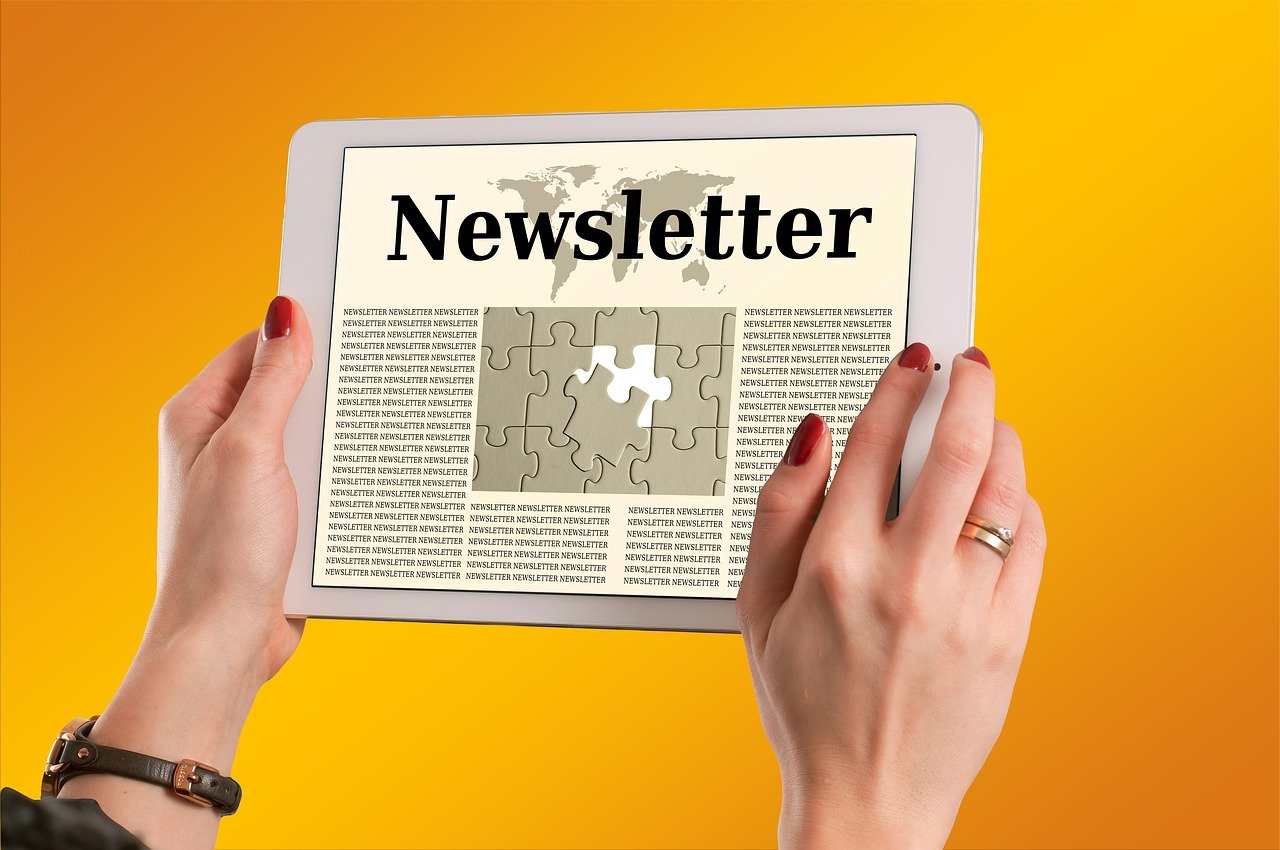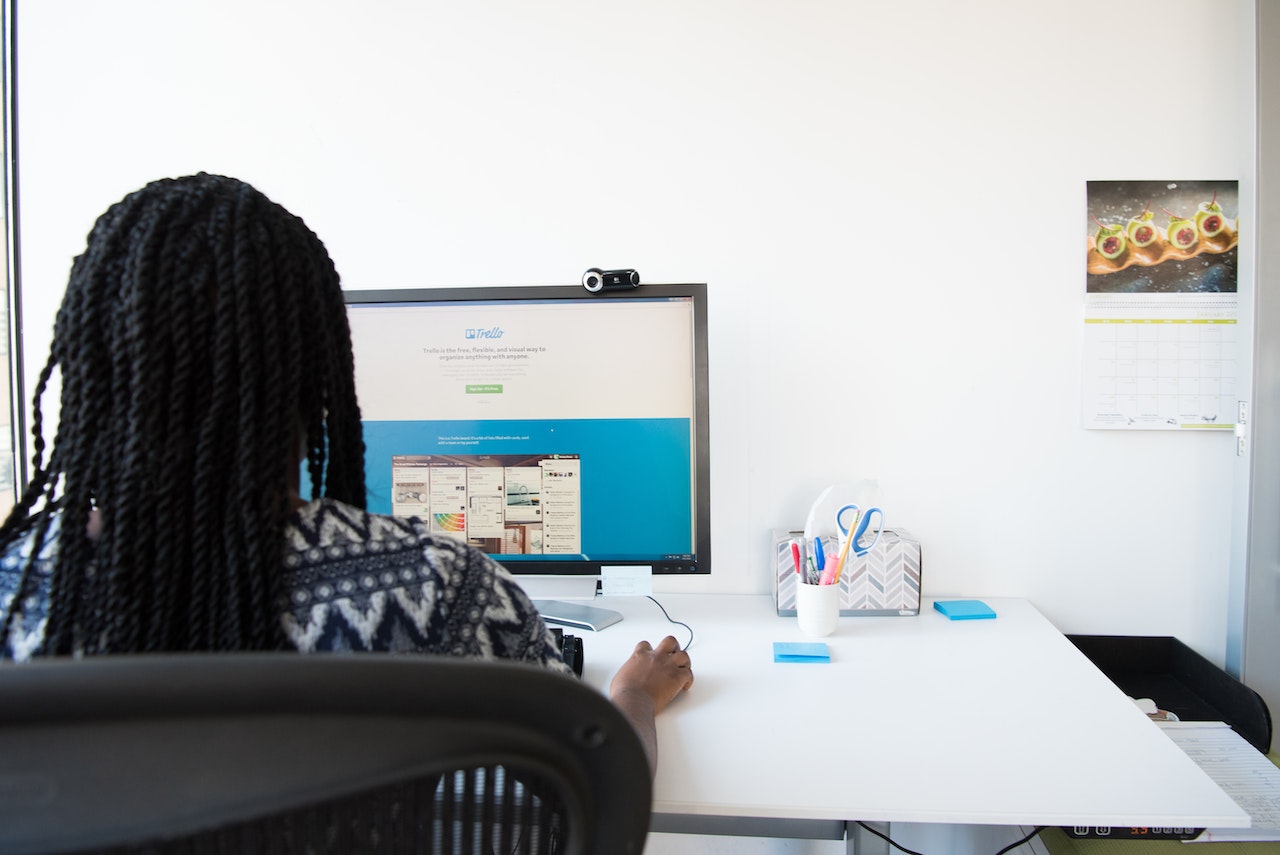Email marketing is reported to deliver an average return on investment (ROI) of 4,200%. With a benefit at that scale, employing email newsletters best practices can make a world of a difference to your company’s bottom line.
Besides serving as a marketing and sales vehicle for customers, the best newsletters can also work to engage staff through internal communications.
Let’s see how to write a newsletter email using the optimal tips and tricks shared within this article.

A newsletter is a form of communication used by companies to share valuable information with prospects, clients and employees. Email newsletters are delivered directly into subscribers’ inboxes.
Email newsletters, also known as email campaigns, are intended to serve specific purposes, such as: driving traffic to your website, increasing sales, sharing information, promoting collaboration, etc.
Email newsletters are designed to grab the attention of the reader with colors, multimedia, and design elements that balance copy and graphics.
When you’re gearing up to write your own email newsletter, you may wonder where a good place to start is. While everyone’s process (and resources) are different, here are some steps to follow to create a stellar newsletter!
A good place to begin is by gaining inspiration. You can look at your own inbox because the chances are high that you’re subscribed to a couple of newsletters already. Or, you can look online to see the best newsletter examples.
Decide what the value of your email newsletter is intended to be so that you can focus the content and design around it. It’s helpful to leverage an email builder replete with countless templates to choose from.
With a template, your email newsletter’s design is already pre-built, so all you have to do is input the content. This frees up your time and removes the need for designers and coders because your email design is already set up for you.
Once you’ve chosen your template (or spent time laying out your own design), it’s time to input the content. Find a good balance between graphic elements/design and copy so that you don’t overwhelm the readers.
With an email builder, the template is already set up with where to input copy versus design elements, so it removes the guesswork and heavy lifting from the design phase.
Have fun with the process because the goal is to create something that people actually want to open and read! Email builders implement the best practices for you so that you can allocate your time to content creation and execution.
Additionally, the best email builders make it easy to customize your email newsletter design with drag-and-drop functionality.
Email newsletters best practices encompass both the design and the content, as those are the elements that make up an email newsletter. To engage your readers, here are some of the considerations you want to make when designing and crafting your next newsletter:
Start off with a theme and overall gist of the newsletter. This is the value that you want your readers to derive.
Come up with a witty and attention-grabbing subject line. A well-crafted subject line promotes people to open the email.
Break up the content you wish to share in sections with headlines that guide the reader to what the copy is about.
Besides reading the email, what do you want the readers to do after? This falls in line with the topic (or purpose of your email). For example, if you’re trying to drive traffic to your website using blog content, then share a photo and snippet of the blog.
Then, finish it off with a button (call-to-action) that links readers to the rest of the blog, with a call-to-action like, “Read More” or “Continue Reading.”
Incorporate your company or personal branding within the email newsletter. This makes it recognizable to your readers and helps to promote brand awareness.
Additionally, include an email footer that contains more information that doesn’t fit within the body of the email. Some information to add in a footer could be social media links, a company logo, or helpful links.

With the content and design ideas ready to go, you’re on your way to make your vision come to life.
Email builders make the process seamless by setting you up with a template to begin. Then, you can simply add the content you want, use an image editor to adjust photos, and export your final HTML creation to your preferred email provider of choice to send it out.
That’s right, you can simply create your email newsletter and send it using Gmail, Outlook, or another provider you are comfortable with. There is even a direct integration to choose the templates within these email providers!
No matter how you create your email newsletter, remember these email newsletter best practices:
85% of email readers choose to do so on a mobile device. With this majority, it’s necessary to make sure that your email design and content renders right on different device sizes. This is what responsive design means.
If manually created and coded, then you’ll have to extensively test HTML emails to ensure their responsiveness. However, if you utilize a mobile responsive email builder, you no longer have to worry about how your email will look across devices as the templates have already been extensively tested.
As you grow your email subscriber database, it’s helpful to segment your audience based on certain factors that are relevant to the content you’re sending. For example, you won’t want to send an abandoned cart email to someone who has never been on your website.
At the same token, you wouldn’t want to share an internal company update with external customers. That’s why it’s important to break down your audience into groups based on the communications.
The purpose of your email doesn’t end when a reader is done reading. Instead, it’s just the beginning of the next step.
With a clear call-to-action button, it’s easy for readers to understand what to do next or where to go for more information. A call-to-action button should stand out, and the copy should be short and direct.
There’s only so much time in a day and content you can add into an email newsletter if you want it to be read. Prioritize your content, and remember that people tend to skim emails.
So, the information at the top and the bottom are most likely to be read and remembered. Pick your content hierarchy wisely.
Wherever possible, add personalization to your email so it feels like it’s been designed and written for the person opening it. Although email campaigns are sent to a mass audience, it doesn’t have to actually feel that way for the reader.
You can use merge tags to drop in first or last names or readers, or segment your audience and send different graphics per target audience.
It’s a regulatory necessity to allow subscribers to unsubscribe easily from your email communications. Although it’s not optimal, it’s a must. A good place to add an unsubscribe option to your email is in the footer.
Send email newsletters on a consistent and frequent basis so readers have an idea of when to expect it. That being said, you don’t want to overdue it because that could lead to unsubscribes. Instead, think about the value you’re adding to a reader’s day before hitting send.
With email builders, you can set up a comfortable cadence because the email builder is designed to help you save time. There’s no need for coders or designers, and you can focus your time on the content that matters.
Although it doesn’t exactly feel like it’s a part of email newsletter design, your subject line is a paramount element in any email newsletter. It’s the first impression for a reader.
When an email newsletter hits a busy inbox, the subject line can spell all the difference between a receiver opening your email or sending it to the trash. Try to write short, clear, concise, and engaging subject lines.
Mixed media, such as images, .GIFs, and videos are a fun way to entertain your readers. Email builders may come with a media library to easily search, upload, and store content.
Additionally, you can find an email builder that has an image editor built-in. This makes it simple to crop and resize the images however you want to include them in your email design.
Sending for the sake of sending is never a good tactic. Instead, keep an eye on analytics to see how your email newsletters are performing. This is one of the most valuable email newsletters best practices because it leads to direct action steps that you can take to improve.
The best email builders come with analytics tracking so you can see your campaign’s open rate, click-through rates and a heat map to see what portion of the email is the most engaging.
With these email newsletters best practices in mind, you have what it takes to craft, design, and send engaging communications! Email builders set you up for success by taking care of the best practices already.
You can use them to design responsive emails, access templates, leverage the content library, track analytics, and send using your favorite integrated email providers.